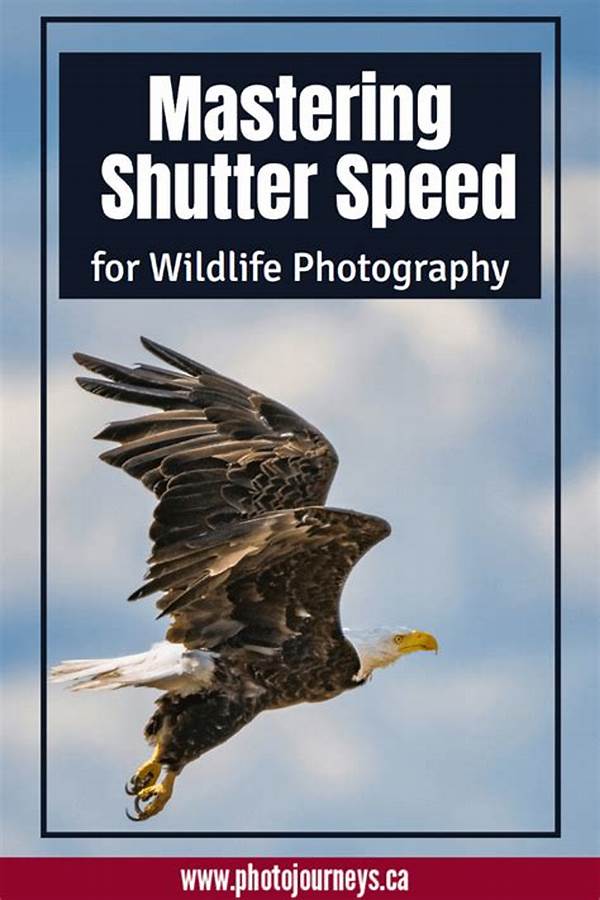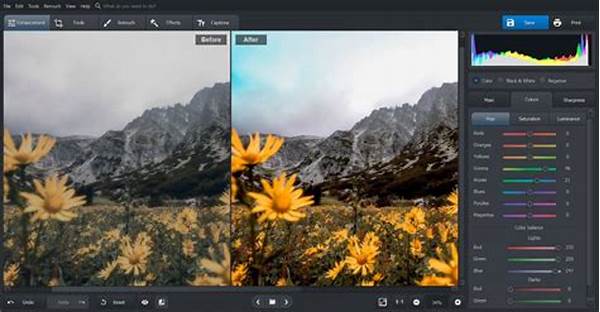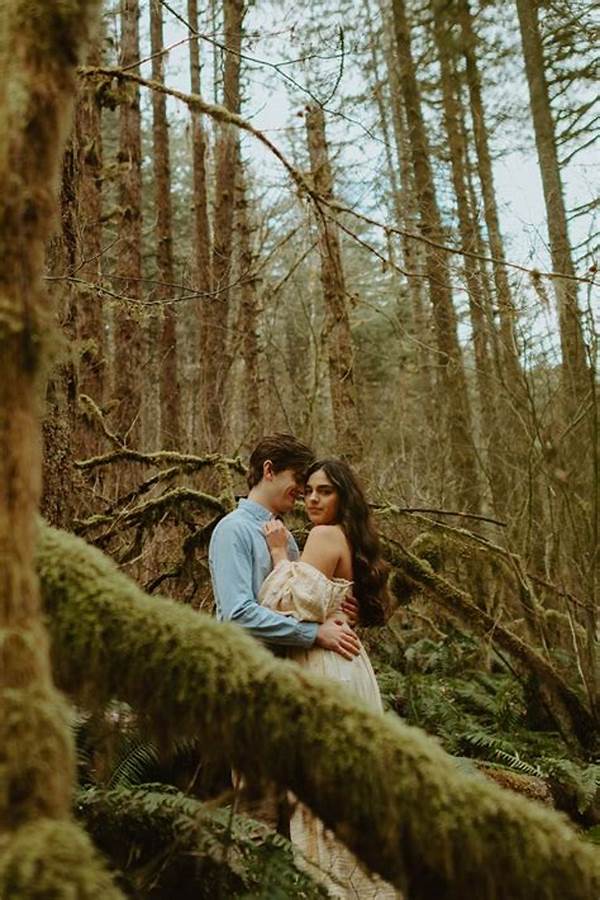Hey there, fellow photography enthusiasts! If you’ve ever found yourself in the majestic realm of wildlife photography, you know that capturing the perfect shot of a swift and elusive creature requires more than just a good eye. Enter: the shutter speed. But what exactly is the optimal shutter speed for wildlife photography? Let’s dive into this fascinating topic and uncover how to get those stunning shots that make your heart leap.
Read Now : Advanced Animal Tracking Technologies
Understanding Shutter Speed Essentials
When it comes to nailing that perfect wildlife shot, understanding the role of shutter speed is crucial. Shutter speed, in essence, is the length of time your camera’s shutter remains open to allow light to hit the sensor. So, why should you care? Well, in the world of wildlife photography where subjects are fast and unpredictable, the optimal shutter speed for wildlife is your best friend for freezing action and reducing motion blur.
Picture this: you’re out in the wilderness, camera in hand, and a cheetah is lunging at its prey. If you have a slow shutter speed, you’ll probably end up with a blurry mess instead of a crisp action shot. To capture clear images of fast-moving animals, a shutter speed of at least 1/1000th of a second might be ideal, especially for birds in flight or animals in action. However, if you’re photographing a more relaxed scene, like a giraffe leisurely munching leaves, you could perhaps get away with a slower shutter speed, like 1/250th of a second. The key is balancing your shutter speed with the lighting conditions and the speed of your subject to achieve that optimal shutter speed for wildlife photos.
Tips for Achieving the Best Shots
1. Lighting Matters: Optimal shutter speed for wildlife can vary based on available light. Bright daylight allows for faster speeds, ensuring sharper images.
2. Know Your Subject: Different animals move differently. A leisurely tortoise requires different settings than a darting hummingbird.
3. Stabilization is Key: A tripod or a steady hand aids in maintaining clarity, especially at lower shutter speeds.
4. Experimentation is Essential: Don’t be afraid to tweak your settings. Each situation is unique and might demand a different approach.
5. Motion Anticipation: Predicting movement can help you choose the right shutter speed and angle.
Challenges of Capturing Wildlife Motion
Wildlife photography can be thrilling, but it’s certainly not without its challenges. One major hurdle is figuring out the optimal shutter speed for wildlife that allows you to freeze a moment without sacrificing image quality. When an animal darts suddenly or the lighting conditions shift unexpectedly, you’ll need to swiftly adjust your settings. This is where knowing your equipment inside-out comes into play.
A good rule of thumb is to practice, practice, practice! Spend time understanding how different settings affect your shots—try capturing birds on the wing or squirrels scampering in your backyard. The goal is to anticipate the movement, adjust your shutter speed accordingly, and quickly adapt to ever-changing environments. In wildlife photography, patience and persistence truly pay off. Over time, you’ll hone your skills and instinctively know the best settings to use for different scenarios, mastering the art of finding the optimal shutter speed for wildlife every time.
Dealing with Different Lighting Conditions
1. Golden Hour Magic: Early morning or late afternoon provides softer light, making it easier to achieve the optimal shutter speed for wildlife.
2. Overcast Days: While clouds diffuse sunlight, they might force you to lower your shutter speed, risking motion blur if the subject is fast-moving.
3. Backlighting Challenges: When your subject is illuminated from behind, a faster shutter might be required to prevent silhouettes.
4. Harsh Midday Sun: Direct sunlight can cause harsh shadows. Compensate with a faster shutter speed to avoid blowing out highlights.
5. Twilight Zones: Low light during dawn or dusk can test your ability to maintain image clarity while using a suitable shutter speed.
Read Now : Mastering Expressive Animal Poses
6. Forest Canopies: In shaded woodlands, the lack of direct light can necessitate adjustments in shutter speed to maintain sharpness.
7. Water Reflections: Shooting near or on water can cause issues with glare, so adjusting your shutter speed becomes crucial.
8. Rapid Light Changes: For animals moving between shadows and sunlight, quick adjustments to shutter speed are often needed.
9. Nocturnal Challenges: Nighttime photography requires even slower speeds combined with higher ISO settings and a steady hand (or tripod).
10. Artificial Lighting: External lights might need compensation in shutter settings to maintain a natural look.
Techniques to Master the Perfect Shot
So, you’ve been bitten by the wildlife photography bug and are eager to perfect your shot-making abilities. Well, let’s talk practical techniques for nailing the optimal shutter speed for wildlife photography. First up, embrace the art of panning. Panning allows you to follow a moving subject with your camera to obtain a sharp result against a blurred background. It’s like nailing a painting masterpiece!
Secondly, don’t underestimate the power of burst mode. You might feel like a paparazzi at a celebrity event, but in wildlife photography, burst mode increases your chances of capturing the moment where motion is at its peak, and blur is at its minimum. Then there’s the charm of single-point autofocus. This nifty technique helps you to maintain focus on the precise spot where action is happening, rather than letting your camera decide what’s most important in the frame. Remember, practice and patience are key. Play around, make mistakes, and learn what works for you, refining your quest for the optimal shutter speed for wildlife, one photo at a time.
Understanding the Importance of Shutter Speed
Breaking it down to basics, the shutter speed in your camera is like the gatekeeper of light. There’s a dance involved—if you want crisp, clear shots, especially in wildlife photography where motion is often rapid, you’ve got to get it just right. Ever tried to capture the flap of a bird’s wing mid-flight? That’s when the story of optimal shutter speed for wildlife comes to the forefront. Making these adjustments becomes intuitive with practice, but boy, does it make all the difference. It invites a certain magic into your frame, giving lifelike details to motion that would otherwise be a blur.
Sometimes, slower shutter speeds are what you need for a dramatic motion effect, like the cascading of a waterfall behind a grazing deer. But let’s not forget that wildlife are spontaneous creatures, often without predictable patterns. You’re like an artist with a palette, using the optimal shutter speed for wildlife to paint the canvas of life in its purest form. It’s a bit like fishing; you need patience, a good eye, and just the right amount of skill. Ah, the thrill of capturing the moment where time stands still—isn’t that the beauty of wildlife photography?
Summarizing Insights on Wildlife Photography
Wrapping it all up, understanding the optimal shutter speed for wildlife photography is like unlocking the secret door to breathtakingly vivid images. It’s a delicate balance of lighting conditions, subject speed, and your anticipation skills. Nabbing that perfect shot might take time, and that’s where the journey of discovery becomes part of the joy. The nuances of adjusting settings become second nature with practice.
Once you’re comfortable, your ability to anticipate an animal’s movement and adjust your shutter speed to match becomes almost zen-like. Sure, there might still be an occasional missed shot, but don’t they say the best photos are the ones yet to be taken? The challenges you face in this photographic journey often become a stepping stone to mastering the art of existing in harmony with the dynamic dance of nature. So grab that camera, get out there, and chase the thrill of wildlife photography with your newfound understanding of the optimal shutter speed for wildlife—you’ve got this!



